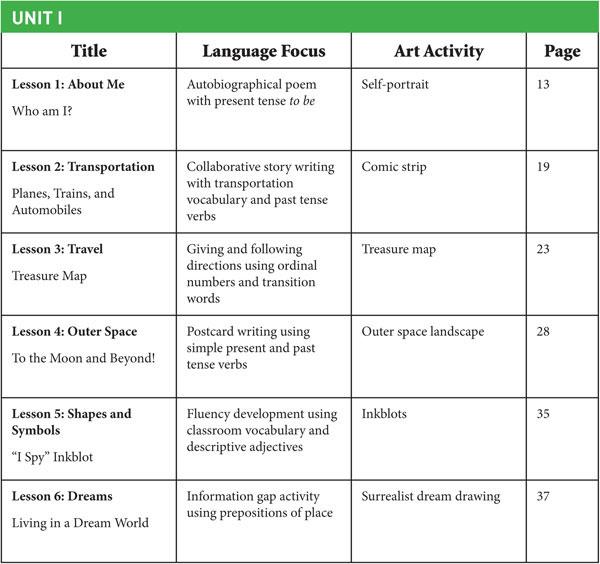Create To Communicate
UNIT I: DRAWING
Drawing is the process of creating shapes or forms on a surface. The possibilities for drawing activities with English language learners are endless. Drawing can be done with very few materials and can be used to enhance a range of classroom topics, themes, or subjects. Drawing can reinforce vocabulary, practice grammatical structures, and provide a creative impetus for meaningful language use in oral conversation practice. Many different subjects can be exploited for use in the classroom in drawing from observation, such as food, plants, flowers, animals, people, household objects, insects, and local landscapes, or students can use their creativity and memories to draw from their imaginations.
Tips for drawing:
- Use the basic shapes of the subject(s) to create an outline of the drawing.
Any subject can be broken down into shapes that construct it. Help students draw a basic outline of their subject by first identifying and drawing the basic shapes that make it up. Once students have drawn the basic shapes in outline, the form, detail, and features of the subject can be added. - Drawing from imagination — there is no “right” or “wrong” way.
Drawing from imagination allows students to use and expand upon the vital resources most young people possess: imagination and creativity. Drawing from imagination differs from drawing from observation in that learners are not directly observing the subject or object; rather, they are using their memories and creativity. Make sure to stress to students that there is no “right” or “wrong” way to draw from imagination. - Adding color
For tips on adding color to drawings, including information about paints, primary, secondary, and tertiary colors, and color mixing, please refer to Appendix A.
Drawing Materials
These are some materials that can be used for the drawing activities in this book. Each lesson plan in this chapter will have a list of the specific materials needed to complete that particular project, with suggestions for variations in case different resources are on hand.
Required
- Drawing tool: pencil, pen, chalk
- Drawing surface: paper, chalkboard, whiteboard
Optional
- Chalkboard
- Colored pencils
- Crayons
- Paper
- Pens
- Pencils
- Markers
- Natural materials
- Sidewalk
- Whiteboard
DRAWING ACTIVITIES
